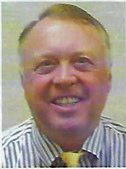 I always say I was a lucky guy to find CH2M HILL. After graduating from Washington State University in 1968 with a B.S. Degree in Civil Engineering, my first job out of college was with Enjay Chemical Company in Baytown, Texas; the name is a play on Standard Oil of New Jersey. However, I had a strong interest in an engineering career. So after 3 years with Enjay and a fortunate draw in the Selective Service lottery (363 out of 365), I enrolled at Stanford University to pursue a graduate degree in Environmental Engineering. That was 1971.
I always say I was a lucky guy to find CH2M HILL. After graduating from Washington State University in 1968 with a B.S. Degree in Civil Engineering, my first job out of college was with Enjay Chemical Company in Baytown, Texas; the name is a play on Standard Oil of New Jersey. However, I had a strong interest in an engineering career. So after 3 years with Enjay and a fortunate draw in the Selective Service lottery (363 out of 365), I enrolled at Stanford University to pursue a graduate degree in Environmental Engineering. That was 1971.
My classmates included several people with ties to CH2M HILL. Dana Rippon, Ted Way, and Don Evans were among those I had the good fortune to meet. At the time, I was not familiar with CH2M HILL but was encouraged to contact the company by my classmates and by Dr. McCarty, one of my Stanford professors. And luckily, I did.
In the summer of 1972, I started in the Corvallis office working for Jerry Boyle. Things didn’t begin as I expected because at the time, Jerry was working on the Metro Denver project site; and there was little work to occupy my time.
Jerry soon returned to Corvallis, and we began a focused effort on the Metro Denver design. Within a short time, the Denver project team moved into a single-wide trailer in the back parking lot of the Corvallis office. The team included Dennis Sandretto, Ron Staehlin, Rick Fornelli, Shurlo Tooker, Jim Newton, and Frank Thompson.
I had to learn a lot quickly. At the time, CH2M HILL engineers were creating pencil drawings; and draftsmen inked the plans from our sketches. This was a far cry from Enjay where drawings were completed by skilled design technicians. At CH2M HILL, it looked as though I might have to rely on my own training and really work for a living. I wondered what I had gotten myself into.
Despite the challenges, the place grew on me. People were competent, friendly, and genuinely seemed to care. That attitude started with Jim Howland, who made it a point to visit and get acquainted with each new employee.
Everyone was good at what they did, and always eager to help. Good work was important, very important. Everyone pitched in to solve problems, always offering time and technical expertise. There was always a feeling that someone had your back.
And there was a culture of fun. Yes, it was a kind of nerdy fun you’d expect from engineers, scientists, planners, and economists. There was also a creative spirit and willingness to chart new frontiers. For example, I worked on a nutrient feed system for a pulp and paper mill wastewater system. Two gentlemen on the project team, Ralph Peterson and Jay Mackie, wouldn’t let me do the easy thing and specify one from Wallace and Tiernan. They asked that I design it “better and cheaper,” and from scratch.
